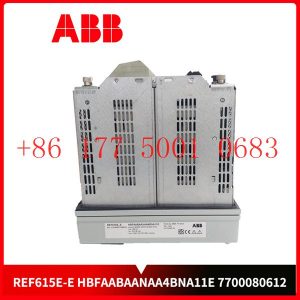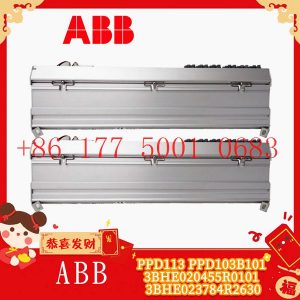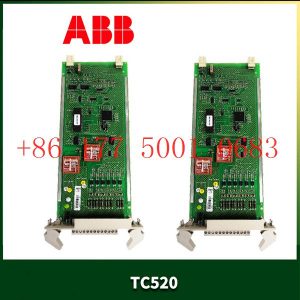Description
hardware flow control. It is an ideal choice in the field of industrial automation.
Orders from Europe fell 2% (6% in U.S. dollars). Markets including Sweden and Italy remained stable. Compared with the same period last year,
orders increased from France, the United Kingdom and Spain, while orders fell in Switzerland, Finland and Norway. In Germany, orders fell 1% (down
5% in US dollar terms). Orders from the Americas were down 1% (down 1% in U.S. dollar terms), with orders from Canada developing well, but performance
elsewhere was mixed. Orders from the United States fell 1% (or 1% in U.S. dollar terms).
In Asia, the Middle East and Africa (AMEA), orders increased 1% (down 3% in US dollar terms). Orders from China and South Korea were lower
, but orders from India, Japan, Singapore and the United Arab Emirates grew well. In China, orders fell 5% (USD declined 7%).
3.4. KUKA Q3 robot business situation
KUKA’s Q3 revenue fell 2% year-on-year to 832.9 million euros, and order volume was 624.8 million euros, a 16.7% decrease from the same period in 2018.
Automobiles and 3C electronics have had a huge impact on KUKA’s robot orders. Robot business orders totaled 215.4 million euros, down 27.5% from last year.
The total orders for KUKA’s China business segment in Q3 were 55.9 million euros. This corresponds to a significant decrease in value of 34.6% compared to the
previous year (Q3/18: €85.5 million). In China, trade policy issues and uncertainty about global economic development have adversely affected customer orders,
particularly in the automotive and electronics industries. Sales revenue fell from 159.2 million euros to 154.1 million euros, a decrease of 3.2%.
Affected by the slowdown in global economic growth, KUKA”s growth in the Chinese market has also been affected. In the first nine months of 2019, KUKA’s total orders
in the Chinese market were 367.9 million euros, a decrease of 17.0% compared with the same period last year. The potential remains high, but due to
lower demand due to the current economic situation, sales revenue fell by 3.0% in the first nine months of 2019 to 381.8 million euros, compared with 393.5 million euros in
the same period last year. The order backlog dropped from 329.7 million euros on September 30, 2018 to 230.6 million euros on September 30, 2019.
4. Industrial capacity utilization has gradually stabilized, and the revenue of some listed robot companies has bottomed out.
Benefiting from the upgrading of my country”s manufacturing industry, the industrial robot sub-sector grew rapidly from 2016 to 2017; however, since 2018, the year-on-year
growth rate of industrial robot output has declined, and the single-month growth rate of output from January to September 2019 was negative, although in October and Production
in November increased by 1.70% and 4.3% year-on-year, but the absolute value was not large. However, this also indicates that the industrial robot industry”s single-month growth rate
decline trend has reversed, and it is expected that the probability of the industry”s growth rate bottoming out throughout the year will increase.
According to data from the National Bureau of Statistics, the output of industrial robots in October 2019 was 14,369 units, a year-on-year increase of 1.7%. The output of industrial robots
in November 2019 was 16,080 units, a year-on-year increase of 4.3%. It has experienced negative growth for two consecutive months. Growth rate turned positive. As of November 2019, the
cumulative output of industrial robots was 166,594 units, a year-on-year decrease of 5.3%. Judging from historical data, China”s industrial robots have experienced rapid growth, especially from
2010 to 2017. In mid-2018, the industry”s growth rate began to decline due to the impact of the trade war, and it is expected to decline slightly throughout 2019.
Industrial robots belong to the general equipment manufacturing industry, and demand is affected by manufacturing investment. Track selection is a key factor in
industrial development. Traditional manufacturing investments mostly focus on expanding factories and purchasing new equipment to expand production capacity. The main result is expansion
of scale. However, due to the excessive new production capacity added by enterprises in the last round of investment cycle, some industries have not yet been able to fully absorb the new production
capacity in the previous period. In this round of capital expansion cycle, the investment focus of enterprises is on the
automation upgrade of existing equipment to improve efficiency. The industrial robot industry has risen along with the industrial upgrading cycle. From January to October 2019,
manufacturing investment increased by 2.6% year-on-year, and manufacturing investment continued to grow steadily.
The manufacturing PMI returned to the expansion range in November , and the industrial capacity utilization rate gradually stabilized. In November 2019,
the manufacturing PMI returned to the expansion range after being below the boom-bust line for six consecutive months, with both manufacturing production and
domestic demand improving. From the production side, the
production index rebounded to 52.6 in November from 50.8 in October. After excluding the seasonal factors that delayed production activities during the
National Day holiday, the improvement in the production index was also significantly better than the same period in previous years. The production side showed signs
of recovery. . From the perspective of domestic demand, the new orders index in November rose by 1.7 to 51.3 from 49.6 in October. Domestic demand improved significantly.
Excitation system ABB module TB825
Excitation system ABB module TB820V2
Excitation system ABB module TB820
Excitation system ABB module TB815
Excitation system ABB module TB811
Excitation system ABB module TB810
Excitation system ABB module TB807
Excitation system ABB module TB806
Excitation system ABB module TB805
Excitation system ABB module TB711F
Excitation system ABB module TB521-ETH
Excitation system ABB module TAS01
Excitation system ABB module TAS.580.0600G00 V01
Excitation system ABB module TAS.580.0560G00
Excitation system ABB module TAS.580.0540G00
Excitation system ABB module TA924F
Excitation system ABB module TA724F
Excitation system ABB module TA526
Excitation system ABB module TA525
Excitation system ABB module TA524
Excitation system ABB module TA523
Excitation system ABB module SYNPOLD CMA132
Excitation system ABB module SYNCHROTACT5 3BHB006713R0217
Excitation system ABB module SYN5202A
Excitation system ABB module SYN5202
Excitation system ABB module SYN5201a-Z,V217 3BHB006714R0217
Excitation system ABB module SY809F
Excitation system ABB module SY809F
Excitation system ABB module SV541
Excitation system ABB module STT02E
Excitation system ABB module STC2BE
Excitation system ABB module STC2AE
Excitation system ABB module STBNIP2311
Excitation system ABB module SS832 3BSC610068R1
Excitation system ABB module SS832
Excitation system ABB module SS832
Excitation system ABB module SS832
Excitation system ABB module SS832
Excitation system ABB module SS822Z
Excitation system ABB module SS822
Excitation system ABB module SR511 3BSE000863R1
Excitation system ABB module SR511 3BSE000863R0001
Excitation system ABB module SPTPS13
Excitation system ABB module SPTKM01
Excitation system ABB module SPSET01
Excitation system ABB module SPSET01
Excitation system ABB module SPSED01
Excitation system ABB module SPNPM22
Excitation system ABB module SPNPM22
Excitation system ABB module SPNPM22
Excitation system ABB module SPNIS21
Excitation system ABB module SPNIS21
Excitation system ABB module SPNIS21
Excitation system ABB module SPNIS21
Excitation system ABB module SPMC2402
Excitation system ABB module SPMC1402
Excitation system ABB module SPIPT800
Excitation system ABB module SPIET800
Excitation system ABB module SPIET800
Excitation system ABB module SPIET800
Excitation system ABB module SPICT13A
Excitation system ABB module SPHSS13
Excitation system ABB module SPHSS13
Excitation system ABB module SPHSS13
Excitation system ABB module SPHSS03 Belica piece
Excitation system ABB module SPHSS03
Excitation system ABB module SPFEC12
Excitation system ABB module SPFEC12
Excitation system ABB module SPFEC12
Excitation system ABB module SPFEC12
Excitation system ABB module SPFCS01
Excitation system ABB module SPER1C1
Excitation system ABB module SPDSO14
Excitation system ABB module SPDSO14
Excitation system ABB module SPDSO14
Excitation system ABB module SPDSO14









Reviews
There are no reviews yet.